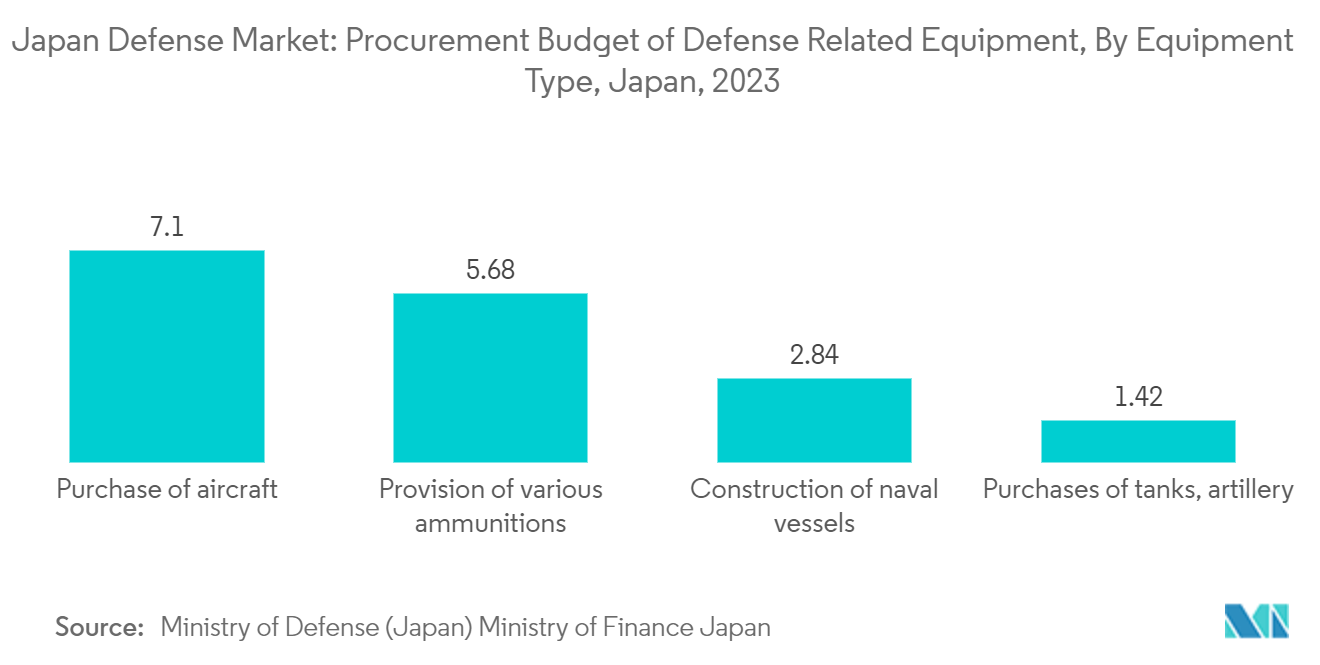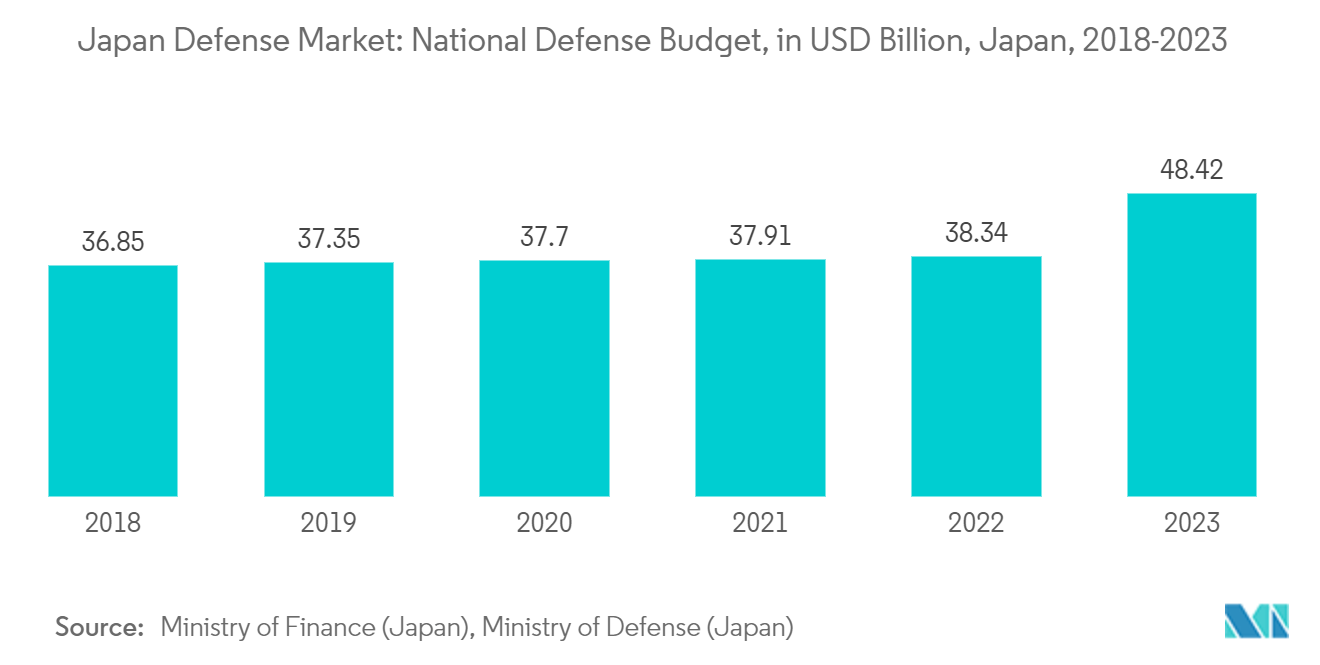Market Trends of Japan Defense Industry
The Air Force Segment Projected to Show the Highest Growth During the Forecast Period
- The Air Force segment is expected to experience the highest growth rate during the forecast period. The growth is attributed to the various ongoing procurement plans for replacing the aging combat aircraft and expanding the fighter jet fleet. Japan plans to acquire 42 F-35Bs and a total of 157 F-35s. Japan's Ministry of Defense plans to allocate over JPY 100 billion (about USD 905 million) in the FY2022 draft budget for the acquisition of about 10 additional F-35A and F-35B stealth fighter jets.
- The armed forces are focusing on enhancing capabilities in the air domain, with an enhanced focus on stand-off defense capability, comprehensive air, and missile defense capability, and deployment capability to effectively counter incoming threats. The country is also working on the development of the Mitsubishi F-X, a sixth-generation stealth fighter for the Japan Air Self-Defense Force. It is Japan's first domestically developed stealth fighter jet and will replace the Mitsubishi F-2 by the mid–the 2030s. Also, in January 2022, the US Department of Defense (DoD) announced a contract worth USD 471 million to The Boeing Company for the development of new systems for Japan Air Self-Defense Force's (JASDF) F-15 Eagle Super Interceptors fleet.
- The Japanese firms have also contributed to the development of various engineering test satellites, marine and terrestrial observation satellites, communications, broadcasting, global navigation satellites, etc., including weather satellites such as the HIMAWARI 8 and 9. In 2022, the Japanese government spent USD 550 million on space activities. The Japanese space firms developed launch vehicles such as the M-V, H-IIA/B, and Epsilon rockets. The Japanese satellite manufacturers are also using their advanced technical capabilities, high quality, and competitive costs to open the overseas market. Thus, growing expenditure on research and development and rising spending on enhancing aviation infrastructure drive market growth across the country.
- Furthermore, with the relaxation of Japan’s strict arms export regulations, the Japanese Ministry of Defense (MoD) entered an agreement with the British government to develop, design, and procure next-generation air-to-air missiles. Such developments are envisioned to contribute to the growth of the Air Force segment during the forecast period.

C4ISR and EW Type to Witness Significant Growth During the Forecast Period
- The increase in C4ISR investments reflects Japan's commitment to modernize its defense infrastructure. As threats evolve and become more sophisticated, the integration of advanced C4ISR systems becomes necessary for enhanced situational awareness, real-time data sharing, and streamlined decision-making processes within the armed forces. The Electronic Warfare Development Center, operating under the Technical Research and Development Institute (TRDI) of the Ministry of Defense, exemplifies Japan's active stance in developing state-of-the-art EW capabilities.
- Japan’s National Defense Program Guidelines (NDPGs) and the associated Mid-term Defense Plan (MTDP) have also put a strong emphasis on three new defense domains in the country, namely, cyber, space, and electronic warfare (EW). In 2021, the Japanese government approved about USD 590 million for space-related projects, which include projects procurement of Space Situational Awareness (SSA), Satellite (Space-based Optical Telescope), enhancing resiliency of satellite communication systems, and others.
- Similarly, the cyber-related budget was about USD 270 million, which includes the establishment of the Japan Self-Defense Force Cyber Defense Command and spending on projects like the procurement of a Cyber Information Gathering System and improvement of cyber protection analyzing devices and the defense information infrastructure.
- In the electromagnetic domain, the government is also planning to develop stand-off electronic warfare aircraft and a network electronic warfare system. In October 2022, Japan and Australia signed a new bilateral security agreement that covered military, intelligence, and cybersecurity cooperation to counter the deteriorating security outlook driven by China’s growing assertiveness.


